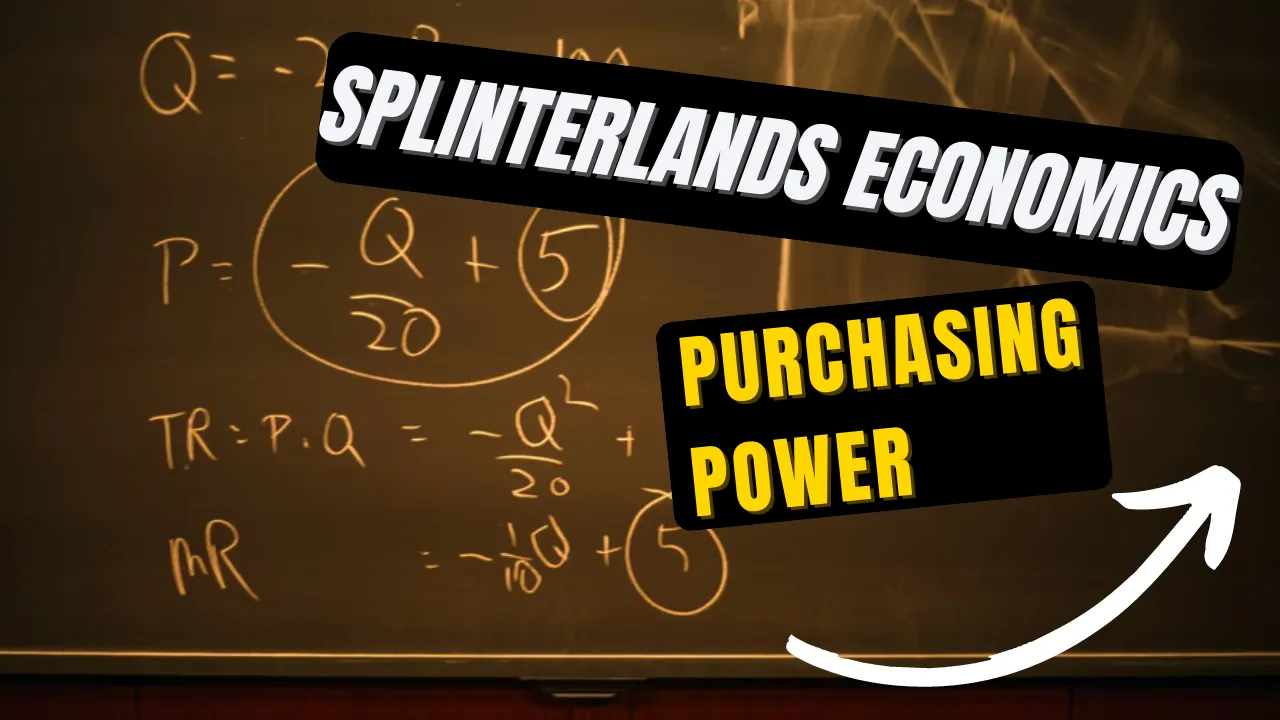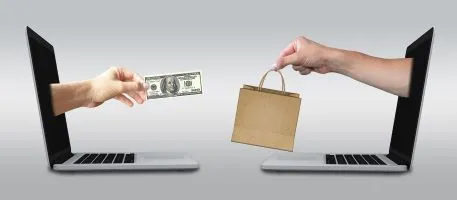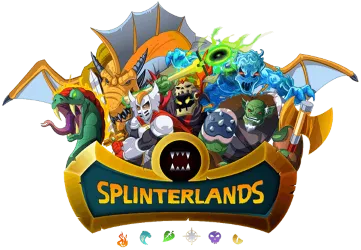Hello everyone! We are back again today with another edition of Splinterland Economics - a series in which we introduce a basic economic concept and then apply it to Splinterlands. If this is your first time reading, just to tell you a little bit about myself: my day job is in an unrelated area but I consider myself a little bit of economics nerd - I read a little (or maybe way, way) more news than I should, double majored in econ, and am obsessed with optimization. I love the way Splinterlands is equal parts card game and resource allocation game. My goal with these articles is to share a little bit of what I know with you all.
Everyone (or almost everyone) loves to buy things. Whether it's going to the mall for a shopping spree, browsing your favorite online merchant on Black Friday, or searching your Splinterlands marketplace of choice for a good deal, buying things gives you that dopamine hit and adds to our collection o' things, for a bit of our spending money. But how much STUFF can you buy? Well, that's our subject for today. This week, we'll be talking about Purchasing Power!

What is Purchasing Power?
As you could probably tell from the introduction or the term itself, Purchasing Power is the amount of goods or services that our money can buy. Purchasing power can be heavily dependent on the currency, as well as your time and location. For example, one US dollar will tend to buy more than 1 Japanese yen. And a US dollar in New York City will generally not be able to purchase as many goods as it would in somewhere like, say, Boise, Idaho, or as much as it could in the same location 50 years ago (thanks, inflation!). In the opposite direction, events such as technological improvements or innovations can increase your purchasing power. The price of large televisions has dropped dramatically over the years, and the same money spent on a computer now can get you a much faster computer now than it could 25 years ago.
Purchasing power makes a big difference whenever you are holding some amount of currency, or if you expect to receive a specific amount of payment in the future - for example, if you are working for an agreed-upon salary, or if you have signed a contract for future payment upon delivery of goods or services. This is why we care about inflation - if there is a 10% inflation rate, then a job with a salary you agreed to work for at the beginning of the year may effectively be paying you 10% less by the end of the year, even if the number on your paycheck remains the same! Similarly, if inflation is high then any savings that you may be holding can similarly depreciate in value.
How do we apply it to Splinterlands?
The Splinterlands ecosystem has several types of currencies, each with varying amounts of behaviors and purchasing power. Credits are tied to the value of the US dollar. DEC is pegged to the dollar, though just loosely - it can vary quite a bit, as anyone who has been around here for a while can tell you! Finally there is SPS, which may be burned for DEC, but is otherwise unlinked from the other currencies - since I have started playing Splinterlands I have seen it as high as 70 cents or even a dollar, and as low as its current price of just 3 cents. As crypto and card prices fluctuate, the purchasing power of each of these currencies can increase or decrease dramatically.
There are several mechanics and promises in the ecosystem which provide loose guardrails for purchasing power. Credits are relatively stable, with a value of $.001. DEC has been promised to be accepted by the Splinterlands team as payment for Splinterlands products at a similar rate of 1000 DEC to $1 USD. And as previously mentioned, SPS may be burned for DEC in a one way conversion for the rate of $1 worth of SPS for 975 DEC. You may notice that this arrangement preserves the purchasing power of DEC - as long as you are keeping that value with in the ecosystem and using it to buy things from the Splinterlands developers. In Splinterlands you will often be earning or receiving various cryptocurrencies from a multitude of different sources, so understanding how the purchasing power of different cryptocurrencies works can help you to maximize your collection in the long run.
Why should we care?
Being aware of purchasing power allows us both to determine how much we are able to buy with our money, and to take steps to protect that purchasing power for the future. For example, if you expect a particular currency to lose large amounts of purchasing power in the future than it may be a good idea to move your capital into a form which will not lose its value - for example, another currency which may be more resilient, or perhaps even some other type of asset class. At the end of the day, maintaining, or even increasing, your purchasing power will allow you to accumulate more stuff. And while money (and stuff!) does not necessarily mean you will have happiness, it can sure make life a whole lot easier.
Thank you so much for reading all the way to the end. Interested in seeing some more of my writing in the future? Be sure to give me a follow! In the meantime, if you'd like to see some of my recent posts:
Taste the Rainbow - Using Prismologist in Battle! - Last week's battle challenge, featuring Prismologist!
Splinterlands Economics: Hedging - An introduction to the concept of hedging, and how we can apply it to Splinterlands!
Splinterlands Economics: Capital - An overview of the concept of capital, and how we can apply it to Splinterlands!
Thinking about giving Splinterlands a try but haven't signed up yet? Feel free to use my referral link: https://splinterlands.com?ref=bteim, and be sure to reach out to me if you have any questions!
All images used in this article are open source and obtained from Pixabay or Unsplash. Thumbnails borrowed with permission from the Splinterlands team or made in Canva.


